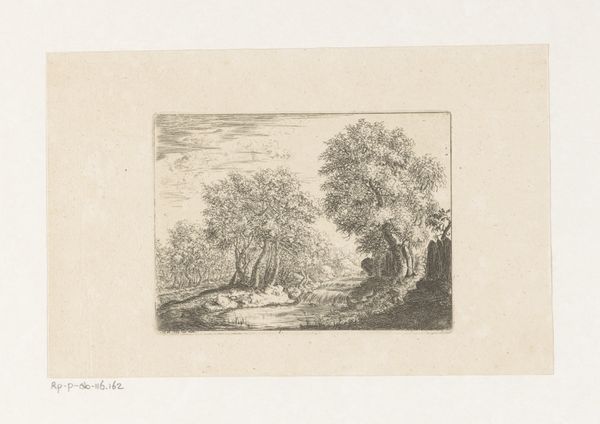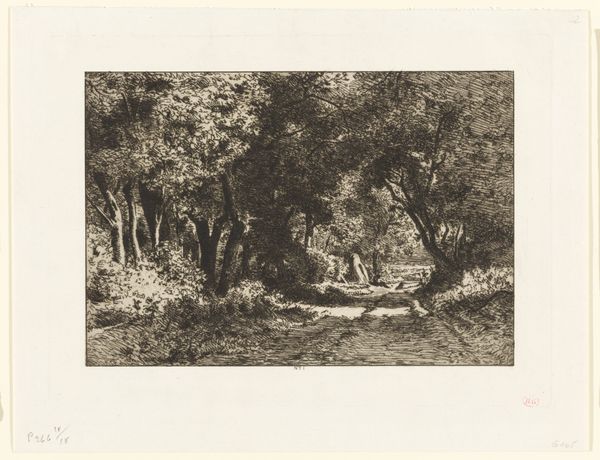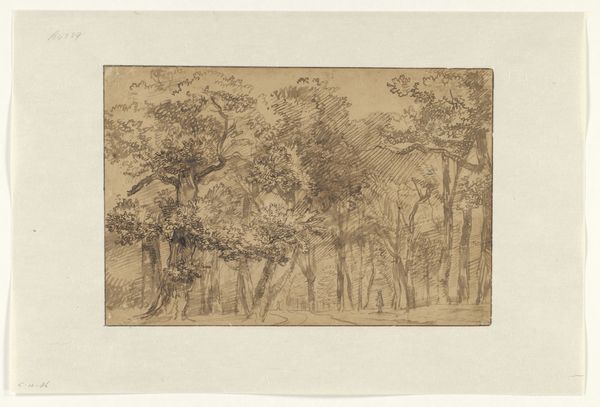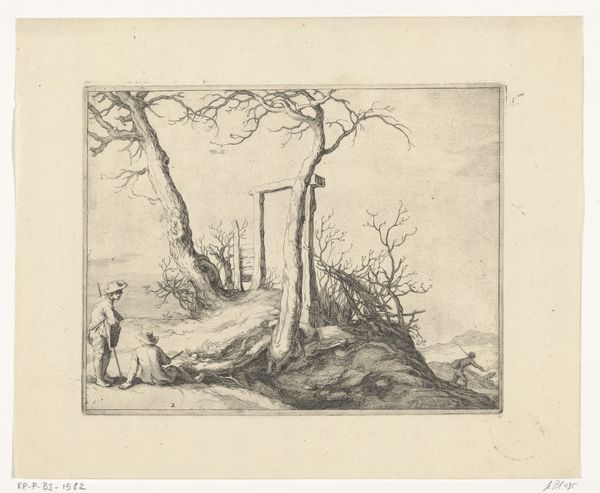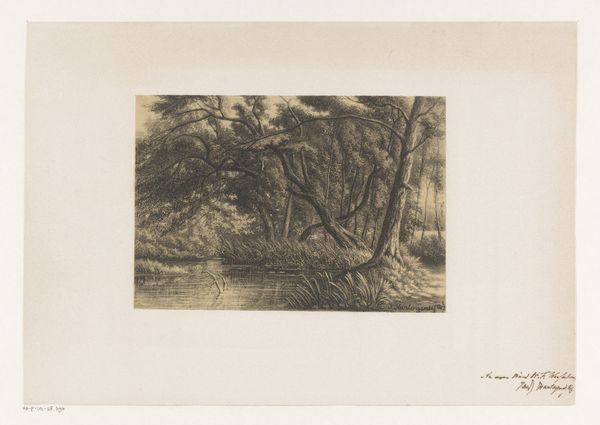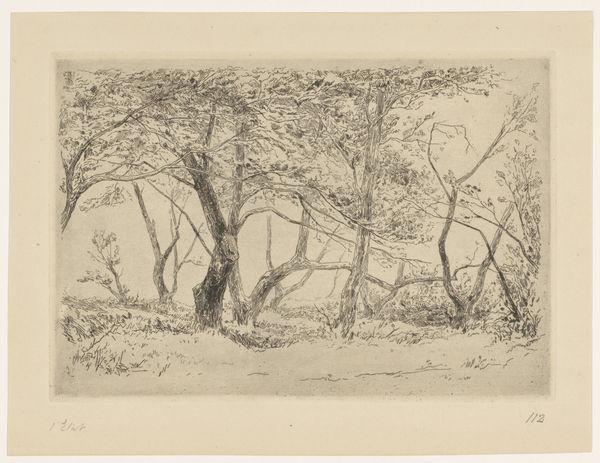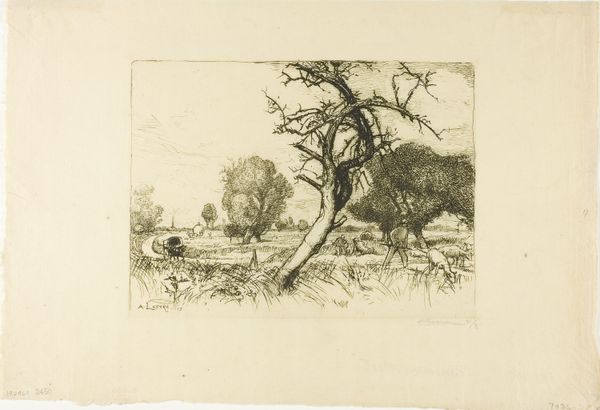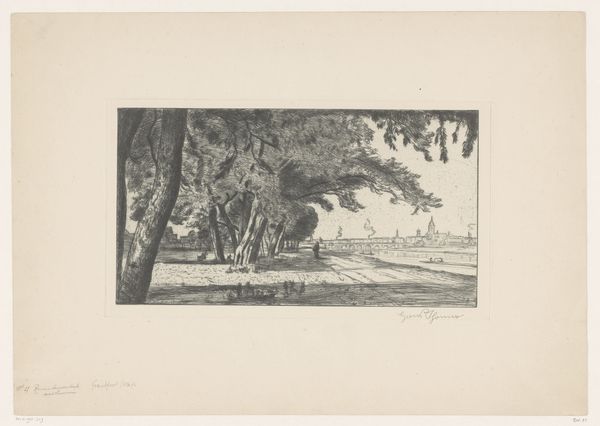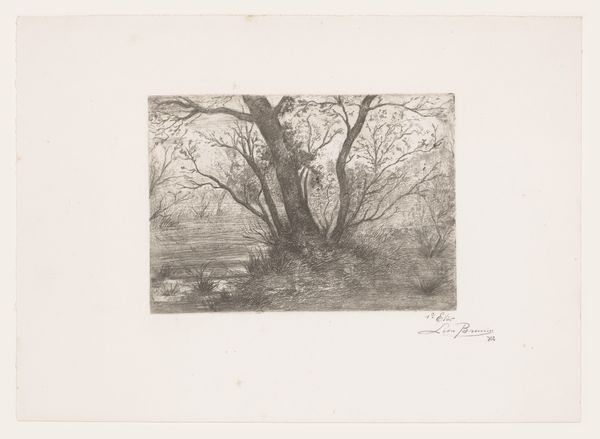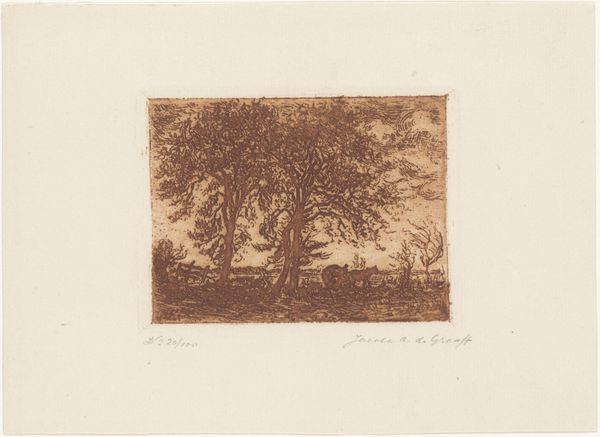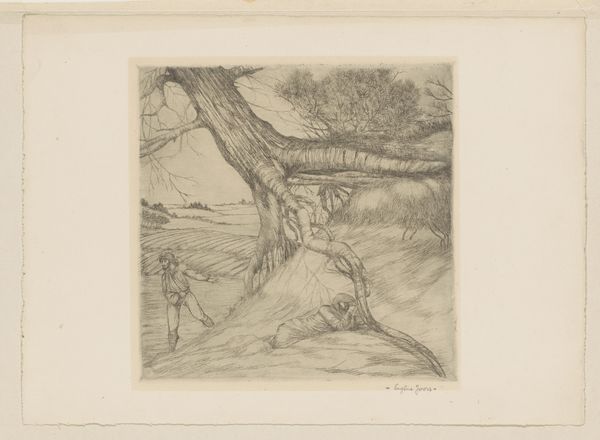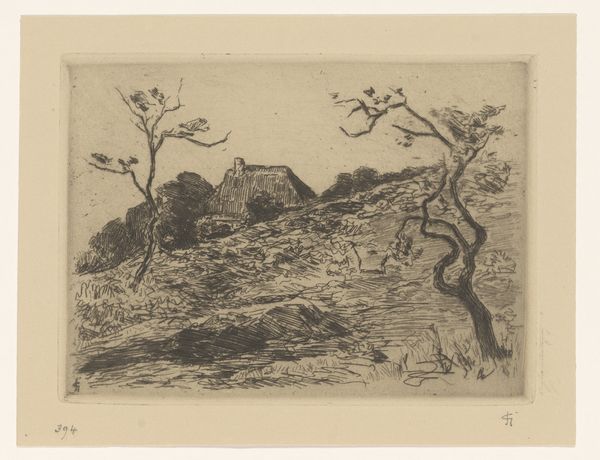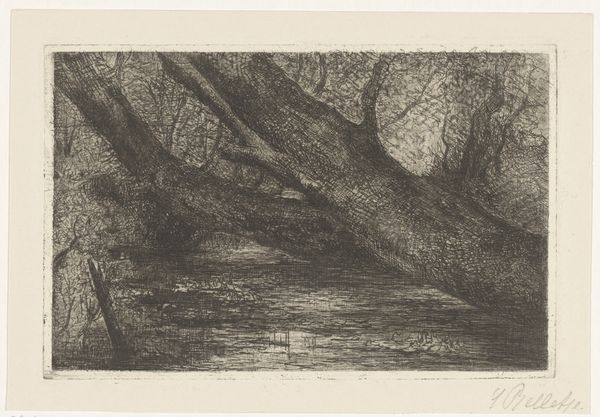
Dimensions: height 254 mm, width 325 mm
Copyright: Rijks Museum: Open Domain
Editor: This is "Landscape with farm behind trees" by Pierre-Eugène Vibert, an etching dating sometime between 1885 and 1937. There’s a real sense of quiet, almost a secretive feeling, evoked by the scene. What symbolic language speaks to you in this work? Curator: I’m struck by the use of trees as both a framing device and a screen. Trees have long carried potent symbolism – life, growth, family, and the connection between earth and sky. The etching presents the farmhouse *behind* a veil of trees. Editor: Yes, almost like a barrier... Curator: Exactly. It could represent something hidden, protected, or perhaps even something slightly forbidden. The style of etching, with its delicate lines, adds to this feeling. It evokes a sense of nostalgia and the ephemeral nature of memory, wouldn’t you say? Does the hazy quality of the etching influence your emotional experience of this work? Editor: It definitely creates a distance. It feels like a memory of a place rather than a real place. Like the artist is intentionally blurring the lines, using a style connected to fleeting, sensory impressions... Curator: Precisely! Think about the farmhouse. It represents home, security, roots. By obscuring it, the artist is playing with the idea of home being both a comforting presence and something ultimately inaccessible, a feeling deepened by the symbolic density of the natural world around it. The tension between the familiar and the obscured creates a haunting effect. Editor: This has definitely given me a new way to consider how the landscape itself operates symbolically, and how stylistic choices really contribute to the feeling an image conveys. Curator: Indeed. Images possess the capacity to embody psychological experiences through carefully chosen, evocative symbolism.
Comments
No comments
Be the first to comment and join the conversation on the ultimate creative platform.
